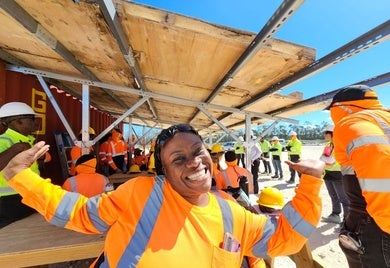IDB World: Bio-businesses in Amazonia, Migrants, The New Office

Amazonian bio-business: a major opportunity for Peru
Brazil nuts, which are native to the Amazon basin, are becoming well-known around the world for their high nutrient content and health benefits. They help regulate the thyroid gland, strengthen the heart and brain function, and support the immune system.
However, even in consumer countries that already appreciate the benefits of Brazil nuts, like the Republic of Korea (South Korea), it’s unlikely that many buyers know that their purchase might come from the Madre de Dios region in southeastern Peru, blessed by abundant rainfall, where the trees that produce this prized fruit grow over 600 meters (200 feet) tall and can live for 500 years. They’re even less likely to know that to reach markets like Asia, the United States, and Europe, Brazil nuts must first travel over 800 miles by road to Peru’s capital, Lima.
Brazil nuts are an opportunity for Amazon communities to grow an alternative crop that helps reduce deforestation. Production can be inclusive and sustainable, as communities themselves are involved in every stage in the chain.
Migration in Latin America and the Caribbean
Migration is one of the oldest processes in the history of mankind. For years, millions of people have moved around the world in search of new places to settle, populating and filling new regions with life. Migration enriches our lives and contributes to the economic and social development of destination communities.
According to data from the United Nations, in 2020 there were around 281 million migrants in the world, accounting for 3.6% of the population, more than double the migrant population of 1990. Beyond a phenomenon of mobility, the Migration is a human right recognized by Article 13 of the Universal Declaration of Human Rights, which stresses that:
-Everyone has the right to move freely and to choose their residence in the territory of a State.
-Everyone has the right to leave any country, including their own, and to return to their country.
The office as we know it, is it finished?
For a percentage of the global workforce, yes.
Do you remember the time when the main event of the day was “going to work”? Get up, prepare and get dressed for work, move (more or less) for an hour, arrive, work, meet behind closed doors, heat food in the public microwave, have lunch discussing the news of the day with colleagues, work a little more, running out to meet the children to help them with their homework while we prepare dinner, jogging for half an hour if we have any time left, and finally “giving up” in bed to get up at 5.30am to do it all over again.
For many, those days are long gone. Even for those who did not stop "going to work" for a single day (such as supermarket workers, or public transport workers, or those who insisted and persisted with face-to-face work), work life changed. They changed the shifts, the dynamics, the habits. But does that mean that the office as we know it is over forever? And was the pandemic the big trigger, or was labor flexibility already gaining ground before?
LIKE WHAT YOU JUST READ?
Subscribe to our mailing list to stay informed on the latest IDB Invest news, blog posts, upcoming events, and to learn more about specific areas of interest.
Subscribe



